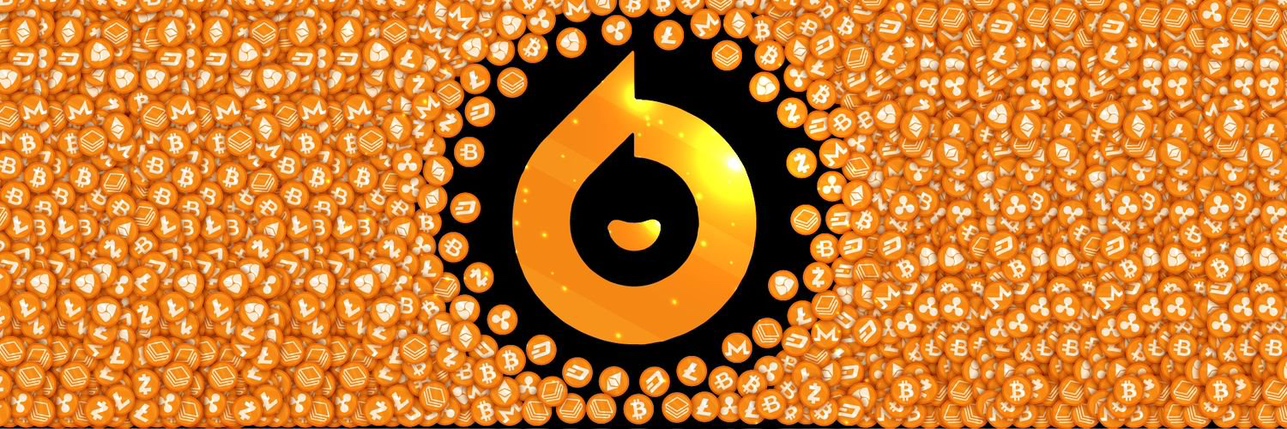
World Liberty Financial USDの価格USD1
JPY
上場済み
¥157.21JPY
-0.01%1D
World Liberty Financial USD(USD1)の価格は日本円では¥157.21 JPYになります。
World Liberty Financial USDの価格チャート(JPY/USD1)
最終更新:2025-11-21 04:29:37(UTC+0)
USD1からJPYへの交換
USD1
JPY
1 USD1 = 157.21 JPY。現在の1 World Liberty Financial USD(USD1)からJPYへの交換価格は157.21です。このレートはあくまで参考としてご活用ください。
Bitgetは、主要取引プラットフォームの中で最も低い取引手数料を提供しています。VIPレベルが高ければ高いほど、より有利なレートが適用されます。
現在のWorld Liberty Financial USD価格(JPY)
現在、World Liberty Financial USDの価格は¥157.21 JPYで時価総額は¥423.94Bです。World Liberty Financial USDの価格は過去24時間で0.01%下落し、24時間の取引量は¥74.03Bです。USD1/JPY(World Liberty Financial USDからJPY)の交換レートはリアルタイムで更新されます。
1 World Liberty Financial USDは日本円換算でいくらですか?
現在のWorld Liberty Financial USD(USD1)価格は日本円換算で¥157.21 JPYです。現在、1 USD1を¥157.21、または0.06361 USD1を¥10で購入できます。過去24時間のUSD1からJPYへの最高価格は¥157.34 JPY、USD1からJPYへの最低価格は¥157.08 JPYでした。
World Liberty Financial USDの価格は今日上がると思いますか、下がると思いますか?
総投票数:
上昇
0
下落
0
投票データは24時間ごとに更新されます。これは、World Liberty Financial USDの価格動向に関するコミュニティの予測を反映したものであり、投資アドバイスと見なされるべきではありません。
World Liberty Financial USDの市場情報
価格の推移(24時間)
24時間
24時間の最低価格:¥157.0824時間の最高価格:¥157.34
過去最高値(ATH):
¥159.69
価格変動率(24時間):
-0.01%
価格変動率(7日間):
-0.05%
価格変動率(1年):
-0.11%
時価総額順位:
#36
時価総額:
¥423,935,912,557.79
完全希薄化の時価総額:
¥423,935,912,557.79
24時間取引量:
¥74,027,863,969.6
循環供給量:
2.70B USD1
最大供給量:
--
World Liberty Financial USDのAI分析レポート
本日の暗号資産市場のハイライトレポートを見る
本日のWorld Liberty Financial USD価格パフォーマンスの概要レポートを見る
World Liberty Financial USDの価格履歴(JPY)
World Liberty Financial USDの価格は、この1年で-0.11%を記録しました。直近1年間のJPY建てUSD1の最高値は¥159.69で、直近1年間のJPY建てUSD1の最安値は¥155.96でした。
時間価格変動率(%) 最低価格
最低価格 最高価格
最高価格 
 最低価格
最低価格 最高価格
最高価格 
24h-0.01%¥157.08¥157.34
7d-0.05%¥157.06¥157.63
30d-0.14%¥157.06¥157.63
90d-0.06%¥157.06¥158.53
1y-0.11%¥155.96¥159.69
すべての期間-0.14%¥155.96(2025-04-16, 219 日前)¥159.69(2025-05-12, 193 日前)
World Liberty Financial USDの最高価格はいくらですか?
USD1の過去最高値(ATH)はJPY換算で¥159.69で、2025-05-12に記録されました。World Liberty Financial USDのATHと比較すると、World Liberty Financial USDの現在価格は1.56%下落しています。
World Liberty Financial USDの最安価格はいくらですか?
USD1の過去最安値(ATL)はJPY換算で¥155.96で、2025-04-16に記録されました。World Liberty Financial USDのATLと比較すると、World Liberty Financial USDの現在価格は0.80%上昇しています。
World Liberty Financial USDの価格予測
USD1の買い時はいつですか? 今は買うべきですか?それとも売るべきですか?
USD1を買うか売るかを決めるときは、まず自分の取引戦略を考える必要があります。長期トレーダーと短期トレーダーの取引活動も異なります。BitgetUSD1テクニカル分析は取引の参考になります。
USD14時間ごとのテクニカル分析によると取引シグナルは売却です。
USD11日ごとのテクニカル分析によると取引シグナルは売却です。
USD11週間ごとのテクニカル分析によると取引シグナルは売却です。
2026年のUSD1の価格はどうなる?
+5%の年間成長率に基づくと、World Liberty Financial USD(USD1)の価格は2026年には¥165.01に達すると予想されます。今年の予想価格に基づくと、World Liberty Financial USDを投資して保有した場合の累積投資収益率は、2026年末には+5%に達すると予想されます。詳細については、2025年、2026年、2030〜2050年のWorld Liberty Financial USD価格予測をご覧ください。2030年のUSD1の価格はどうなる?
+5%の年間成長率に基づくと、2030年にはWorld Liberty Financial USD(USD1)の価格は¥200.57に達すると予想されます。今年の予想価格に基づくと、World Liberty Financial USDを投資して保有した場合の累積投資収益率は、2030年末には27.63%に到達すると予想されます。詳細については、2025年、2026年、2030〜2050年のWorld Liberty Financial USD価格予測をご覧ください。
注目のキャンペーン
World Liberty Financial USDのグローバル価格
現在、World Liberty Financial USDは他の通貨の価値でいくらですか?最終更新:2025-11-21 04:29:37(UTC+0)
USD1 から ARS
Argentine Peso
ARS$1,422.96USD1 から CNYChinese Yuan
¥7.11USD1 から RUBRussian Ruble
₽79.96USD1 から USDUnited States Dollar
$1USD1 から EUREuro
€0.87USD1 から CADCanadian Dollar
C$1.41USD1 から PKRPakistani Rupee
₨282.31USD1 から SARSaudi Riyal
ر.س3.75USD1 から INRIndian Rupee
₹88.61USD1 から JPYJapanese Yen
¥157.21USD1 から GBPBritish Pound Sterling
£0.76USD1 から BRLBrazilian Real
R$5.33World Liberty Financial USD(USD1)の購入方法

無料でBitgetアカウントを作成します
Eメールアドレス/携帯電話番号でBitgetに登録し、アカウントを保護するために強力なパスワードを作成します。

アカウントを認証する
個人情報を入力し、有効な写真付き身分証明書をアップロードして本人確認(KYC認証)を行います。

USD1をJPYに交換
Bitgetで取引する暗号資産を選択します。
よくあるご質問
World Liberty Financial USDの現在の価格はいくらですか?
World Liberty Financial USDの現在の価格は、Bitget Exchangeなどのプラットフォームで確認できます。
ワールドリバティファイナンシャルUSDは現在、良い投資でしょうか?
投資判断は、リサーチと市場動向に基づくべきです。Bitget取引所で利用可能なリソースと統計を参照してください。
World Liberty Financial USDの価格に影響を与える要因は何ですか?
市場の需要、取引量、全体的な暗号通貨市場の動向などの要因がWorld Liberty Financial USDの価格に影響を与えます。
世界自由金融USDはどこで購入できますか?
様々な暗号通貨取引所、特にBitget取引所で世界自由金融USDを購入できます。
世界リバティファイナンシャルUSDの価格は他の暗号通貨とどのように比較されますか?
価格を比較するには、Bitget Exchangeの詳細なチャートと市場の動きをチェックできます。
ワールドリバティファイナンシャルUSDの価格予測は何ですか?
価格予測は市場分析に基づいて異なるため、Bitget Exchangeのような信頼できるプラットフォームでアナリストが提供する予測を探すのが最善です。
World Liberty Financial USDの価格に影響を与える最近のニュースやイベントはありますか?
暗号市場に影響を与える最近のニュースを、Bitget Exchangeのニュースセクションや更新を通じて常に把握してください。
ワールドリバティファイナンシャルUSDの価格はどれくらい変動しますか?
ワールドリバティファイナンシャルUSDのボラティリティは高くなる可能性があり、より良い理解のためにBitget取引所でその価格動向を監視することをお勧めします。
ワールドリバティファイナンシャルUSDの歴史的価格トレンドは何ですか?
Bitget取引所でワールドリバティファイナンシャルUSDの歴史的価格トレンドとデータを表示できます。
World Liberty Financial USDに最適な取引戦略は何ですか?
人気のある戦略にはデイトレーディングやスイングトレーディングが含まれ、Bitget取引所のリソースやコミュニティディスカッションが効果的な戦略についての洞察を提供します。
World Liberty Financial USDの現在の価格はいくらですか?
World Liberty Financial USDのライブ価格は¥157.21(USD1/JPY)で、現在の時価総額は¥423,935,912,557.79 JPYです。World Liberty Financial USDの価値は、暗号資産市場の24時間365日休みない動きにより、頻繁に変動します。World Liberty Financial USDのリアルタイムでの現在価格とその履歴データは、Bitgetで閲覧可能です。
World Liberty Financial USDの24時間取引量は?
過去24時間で、World Liberty Financial USDの取引量は¥74.03Bです。
World Liberty Financial USDの過去最高値はいくらですか?
World Liberty Financial USD の過去最高値は¥159.69です。この過去最高値は、World Liberty Financial USDがローンチされて以来の最高値です。
BitgetでWorld Liberty Financial USDを購入できますか?
はい、World Liberty Financial USDは現在、Bitgetの取引所で利用できます。より詳細な手順については、お役立ちworld-liberty-financial-usdの購入方法 ガイドをご覧ください。
World Liberty Financial USDに投資して安定した収入を得ることはできますか?
もちろん、Bitgetは戦略的取引プラットフォームを提供し、インテリジェントな取引Botで取引を自動化し、利益を得ることができます。
World Liberty Financial USDを最も安く購入できるのはどこですか?
戦略的取引プラットフォームがBitget取引所でご利用いただけるようになりました。Bitgetは、トレーダーが確実に利益を得られるよう、業界トップクラスの取引手数料と流動性を提供しています。
今日の暗号資産価格
World Liberty Financial USD(USD1)はどこで買えますか?
動画セクション - 素早く認証を終えて、素早く取引へ

Bitgetで本人確認(KYC認証)を完了し、詐欺から身を守る方法
1. Bitgetアカウントにログインします。
2. Bitgetにまだアカウントをお持ちでない方は、アカウント作成方法のチュートリアルをご覧ください。
3. プロフィールアイコンにカーソルを合わせ、「未認証」をクリックし、「認証する」をクリックしてください。
4. 発行国または地域と身分証の種類を選択し、指示に従ってください。
5. 「モバイル認証」または「PC」をご希望に応じて選択してください。
6. 個人情報を入力し、身分証明書のコピーを提出し、自撮りで撮影してください。
7. 申請書を提出すれば、本人確認(KYC認証)は完了です。
World Liberty Financial USDを1 JPYで購入
新規Bitgetユーザー向け6,200 USDT相当のウェルカムパック!
今すぐWorld Liberty Financial USDを購入
Bitgetを介してオンラインでWorld Liberty Financial USDを購入することを含む暗号資産投資は、市場リスクを伴います。Bitgetでは、簡単で便利な購入方法を提供しており、取引所で提供している各暗号資産について、ユーザーに十分な情報を提供するよう努力しています。ただし、World Liberty Financial USDの購入によって生じる結果については、当社は責任を負いかねます。このページおよび含まれる情報は、特定の暗号資産を推奨するものではありません。
USD1からJPYへの交換
USD1
JPY
1 USD1 = 157.21 JPY。現在の1 World Liberty Financial USD(USD1)からJPYへの交換価格は157.21です。このレートはあくまで参考としてご活用ください。
Bitgetは、主要取引プラットフォームの中で最も低い取引手数料を提供しています。VIPレベルが高ければ高いほど、より有利なレートが適用されます。
USD1の各種資料
World Liberty Financial USDの評価
4.4
タグ:
コントラクト:
0x8d0D...6f08B0d(BNB Smart Chain (BEP20))
もっと
Bitgetインサイト

Bpay-News
2025/11/13 08:32
WLFI partners with AB to officially deploy the USD1 stablecoin on the AB public blockchain
USD1+0.01%

tokenterminal_
2025/11/04 00:03
Fastest growing RWA on @ethereum in the past 30d?
@worldlibertyfi USD1, with supply up +121.5% in the past month.
USD1+0.01%

PaulBennett
2025/11/03 16:13
🚨𝐓𝐫𝐮𝐦𝐩 𝐓𝐮𝐫𝐧𝐬 𝐓𝐨𝐤𝐞𝐧𝐬 𝐢𝐧𝐭𝐨 𝐌𝐢𝐥𝐥𝐢𝐨𝐧𝐬 - $𝟖𝟎𝟎𝐌 𝐢𝐧 𝐌𝐨𝐧𝐭𝐡𝐬!
💥 How it happened:
• $WLFI tokens: 75% of token-sale revenue went straight to Trump-linked accounts.
• $TRUMP coin: Trading fees on Meteora generated ~$336M for the family.
• USD1 stablecoin: Yield-bearing reserves brought in another ~$80M annually.
• Alt5 Sigma treasury deals & foreign buyers: Turned on-paper gains into real cash fast.
So, Trump just turned the blockchain into a personal ATM. And somehow it’s legal…ish 🥲
WhiteBIT Chart (5D): $WLFI
WLFI-2.74%
USD1+0.01%

Crypto_GR
2025/10/29 14:55
World Liberty Will Distribute 8.4 Million $WLFI Tokens
The World Liberty Financial project, linked to the Trump family, will give away 8.4 million $WLFI tokens (worth about $1.09 million) to early users of its USD1 Points program.
The distribution will go to those who traded pairs involving the $USD1 stablecoin and kept it in their balance on partner exchanges.
WLFI-2.74%
USD1+0.01%

Cointime(1)
2025/10/29 01:49
WLFI:计划向USD1积分计划参与者分发840万枚WLFI
特朗普家族加密项目WLFI官方表示,其CEX合作伙伴将向USD1积分计划的参与者分发840万枚 $WLFI 。WLFI积分计划将随着USD1持续扩展,包括推出更多赚取积分的方式、新的交易对和USD1的使用场景、即将推出的DeFi集成,以及更广泛的奖励机会,用以促进USD1的使用和推广。
WLFI-2.74%
USD1+0.01%
取引
Bitget Earn
USD1は Bitget取引所に取引できませんが、 Bitget Walletに預けることができます。 また、Bitget取引所はCEXのプラットフォームとして初めてUSD1取引をサポートしています。
USD1をBitgetで取引できます。USD1/USDT
現物Bitgetに新規上場された通貨の価格








